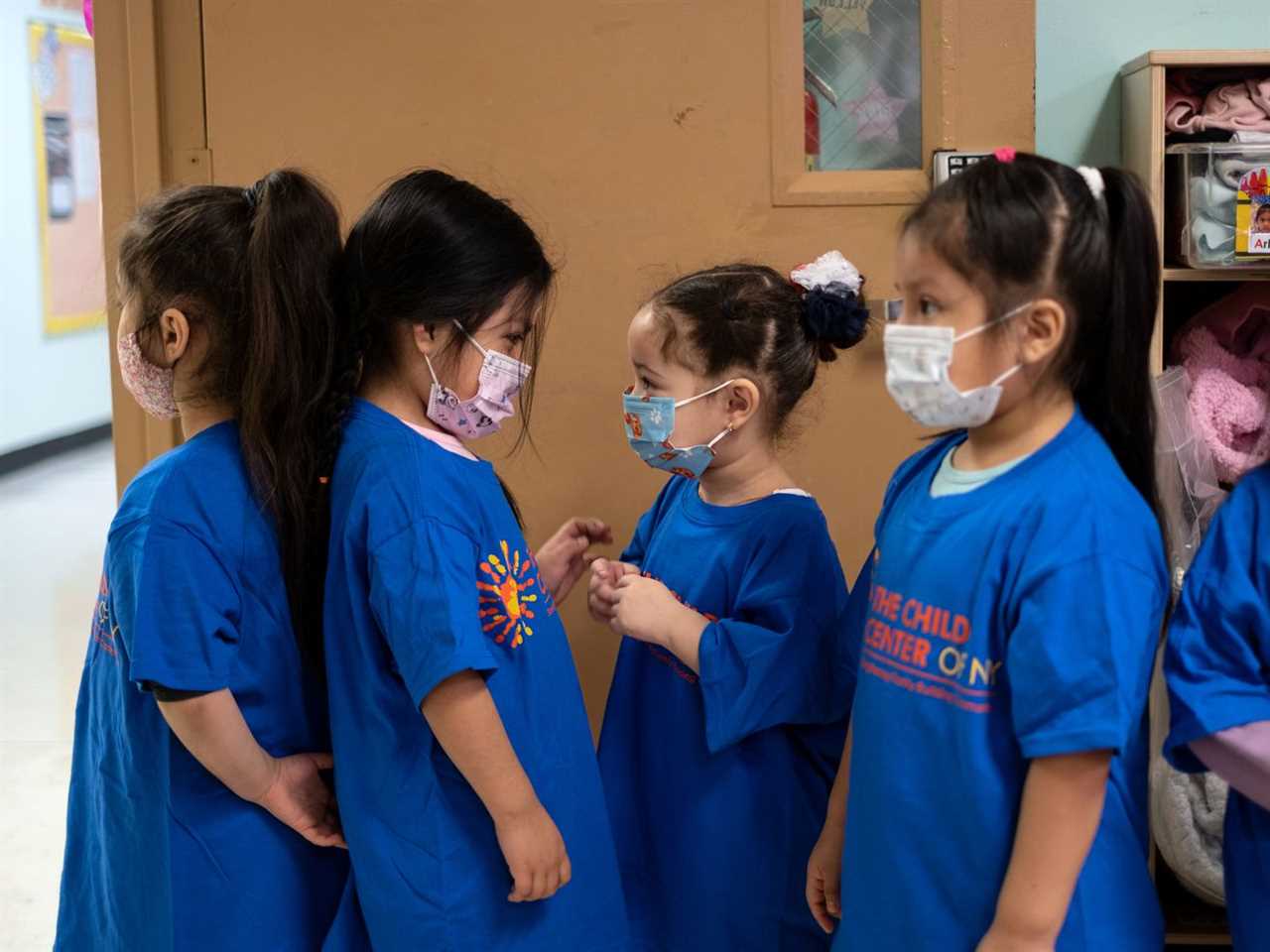
What the pandemic took from America’s youngest children — and how to help them get it back.
It’s 10 am, and the flower shop at Classroom 9 is open for business.
Nataly, 5, is the cashier, presiding over a toy register and a vibrant array of cloth roses, carnations, and orchids. Arlet, also 5, mops the floor. Their teacher, Rawshan Khanam, is the first customer. For a modest bouquet, Nataly quotes her a price of $50.
Aside from a bit of sticker shock (inflation has clearly hit the preschool flower market), it seems like the most ordinary interaction in the world: a couple of little kids and their teacher playing store. The students at the Child Center of New York Corona Head Start program in Corona, Queens, however, spent some of their most crucial formative years in a pandemic, when going to the store — or anywhere else — was no longer so simple.
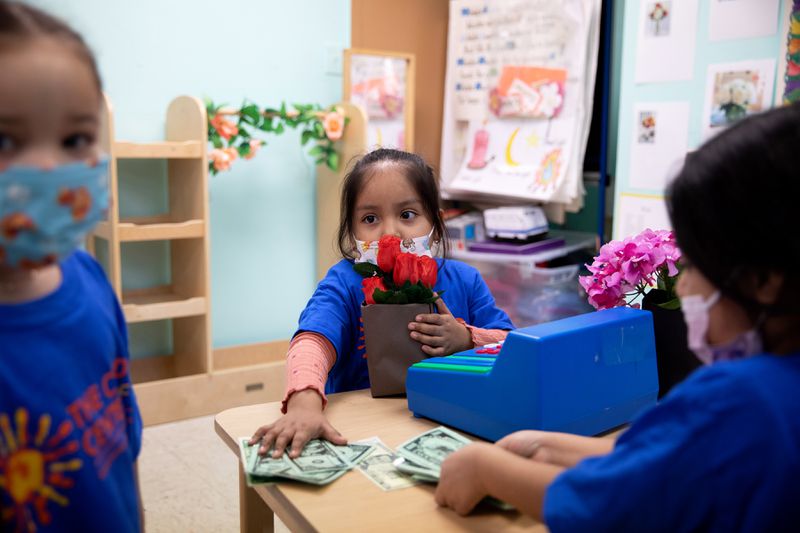
That history keeps coming up even now that they’re attending preschool at the Corona Head Start program, which serves low-income kids in a part of New York City hard-hit by Covid. Khanam is reminded of everything her students have missed out on when she asks them about once-common childhood experiences. “Have you ever been to a museum? No. Have you ever been to a beach? No. Have you ever been to a library? No,” she said. “It’s so much ‘no’ in their lives.”
At this point, two and a half years into the pandemic, many kids have begun to catch up on experiences they missed. Children under 5, however, still aren’t able to be vaccinated, leaving some families unsure how much return to normalcy is really safe — or possible. At the same time, infants, toddlers, and preschoolers have gone through crucial years of early social and emotional development at a time of trauma and isolation for many Americans. Many spent some of their earliest months on lockdown, often interacting only with family and missing out on small but real learning experiences like playing in a sandbox or going to the grocery store. Many of their caregivers went through extreme stress as well, which can affect children even before they’re born.
Psychologists, educators, and other experts are still learning what it means for little kids to be born into the biggest public health crisis in a generation. Some of the news is concerning: one study, for example, found that babies born during the pandemic were slightly behind their pre-pandemic counterparts on measures of motor and social development. Parents and teachers are also worried about young children’s language development after long periods of isolation and mask-wearing. “Their speech is so delayed,” Khanam said.
The picture that’s emerging, though, is not as bleak as some might fear. Experts agree that young children’s still-developing brains are uncommonly good at bouncing back from and adapting to new realities — even difficult ones. “Children are really resilient, and anything that they’re experiencing during this pandemic probably prepares them well for future stressors,” said Moriah Thomason, a human developmental neuroscientist at New York University.
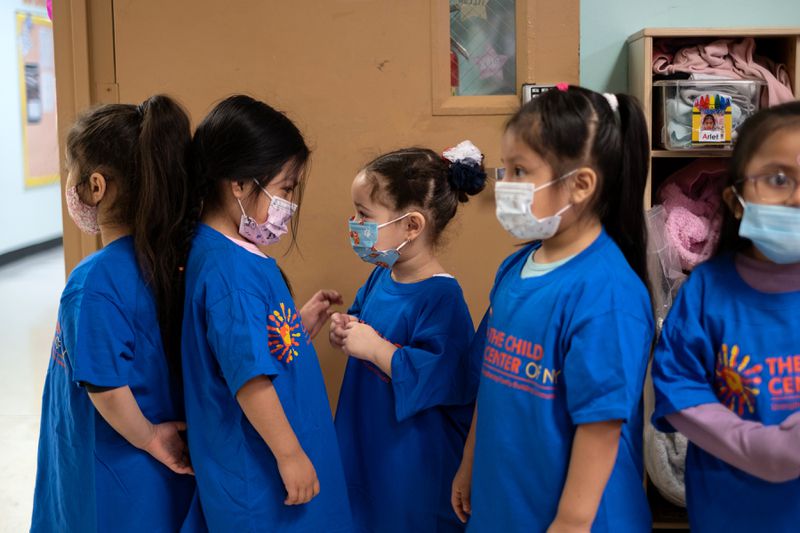
Today’s youngest children could actually emerge from this pandemic better equipped for what the next few years hold than adults who were already set in their ways when lockdown began. In order to heal and learn the lessons they missed out on in the pandemic’s earlier days, however, they need help — counseling, speech therapy, and other supports that are often in short supply as school systems and city governments continue to reel from the effects of the pandemic. As Khanam put it, “They’re resilient, they’re survivors, but they need services.”
The first five years are widely regarded as some of the most important, developmentally, of a child’s life. During the earliest years, children establish the neural architecture they’ll build on throughout their lives — Thomason likens it to the foundation and scaffolding of a building. The first few years of life are also “a period of high neuroplasticity” when the brain is changing rapidly and environmental influences are especially important, Thomason said. “Disruptions in this period are associated with bigger long-term outcomes, as if you’ve opened a chasm.”
The pandemic has certainly been rife with disruptions. Many babies and young children interacted only with immediate family for months at a time. For Rene, now 5 and one of the students in Khanam’s class, not being around his peers had a severe impact, his mom, Lucia Hernandez, said through an interpreter. She even noticed his skin becoming discolored during lockdown, which she believes was a symptom of stress.
Kids’ opportunities for experiencing the wider world were also severely curtailed. At the beginning of lockdown, Bella, now 4, couldn’t even go to the park, her grandmother, Gladys Vasquez, recalled. Even when she and her big sister True were allowed to go out again, they couldn’t play with other kids. “The park is not that much fun when they’re by themselves,” said Vasquez, who lives with the girls on Manhattan’s Lower East Side, where Bella now attends a Head Start program.
While older kids attended school remotely, those under 5 often had no social outlets, even virtual ones, beyond their household. This age group was “more socially isolated than any other population,” said Jennifer March, executive director of the Citizens’ Committee for Children of New York, a child advocacy organization.
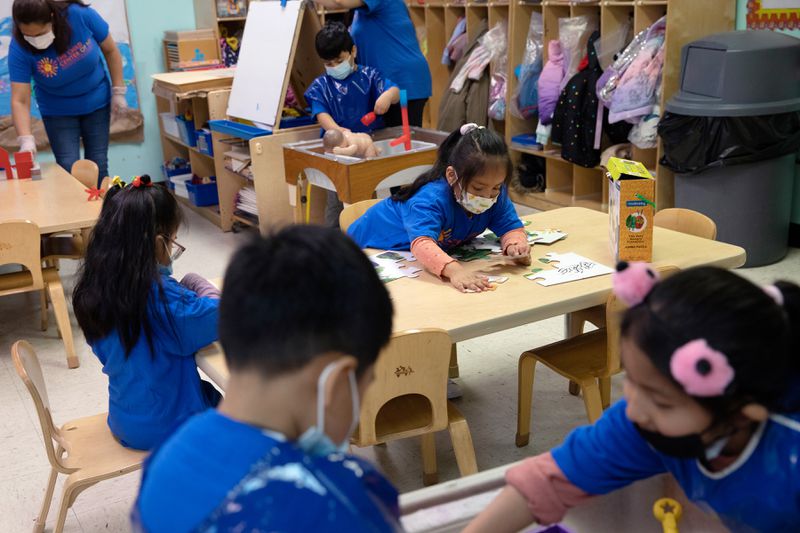
The youngest kids may have begun feeling the effects of the pandemic before they were even born. When the crisis began, researchers at Columbia University set out to study the impact of maternal Covid-19 infection on babies. The good news is the impact was negligible: The team found no developmental differences between babies whose moms had been infected during pregnancy and babies whose moms had not.
Then the researchers compared all the babies in their sample to babies born before the pandemic began. Here they did find differences: Babies born during the pandemic, regardless of whether they’d actually been exposed to Covid in utero, scored slightly lower than their pre-pandemic counterparts on measures of gross motor, fine motor, and personal/social skills.
When the researchers drilled down further, they found the largest effect among babies whose mothers were in their first trimester when the pandemic first hit American shores in early 2020. They believe the cause may be prenatal exposure to maternal stress. “I have a 2-year-old who was born during peak pandemic,” said Lauren Shuffrey, an associate research scientist at Columbia University Medical Center who worked on the research. “It was a very stressful time for mothers.”
Her team is not the only one to find differences between kids born before the pandemic and those born since. Researchers at Brown University found that infants’ scores on tests of language, motor, and visual skills began dropping in 2020, as Melinda Wenner Moyer reported in Nature. The differences were greatest in boys and babies from low-income families; motor skills were the most affected; and rather than resolving, the gaps appeared to widen as the pandemic went on. “The magnitude is massive — it’s just astonishing,” medical biophysicist Sean Deoni, who worked on the research, told Nature.
Anecdotally, families and teachers, too, see impacts of the pandemic on young children. Bella has had issues with her speech, such as stuttering, that her grandmother attributes in part to isolation. “She was always home and not having someone always constantly teaching [her] something,” Vasquez said. “It’s hard for her to express herself verbally.”

Rene, meanwhile, was receiving speech therapy before the pandemic started. During lockdown, the therapy switched to Zoom, which just wasn’t the same, Hernandez said. It was a common problem — one study of school-aged children with disabilities found that 42 percent lost access to all therapy services during the first four months of the pandemic, and 34 percent got at least one therapy remotely. Meanwhile, 40 percent of parents saw declines in kids’ motor, behavioral, social, or communication skills that they attributed to the change in therapy.
The interruption in services had particular implications for the youngest kids. In normal times, if daycare or preschool teachers notice a child showing signs of a developmental delay or disability, they can refer the child for early intervention services, available in every state, that can help. Constrained state budgets can make it hard to get access to these services, even in the best of times, but “if something little is going on at 12 months, it’s so much better to intervene then,” rather than waiting until the child is 5 or 6, said Bridget O’Rourke, associate executive director for early childhood education at the social services agency University Settlement.
During lockdown, though, “early intervention services essentially came to a halt,” O’Rourke said. Kids who were already getting therapies often stopped getting them, and many who would otherwise have been identified as having a delay or disability simply were not. Now those services have started up again, but there’s still a backlog to work through, and many families aren’t getting help in a timely fashion.
Then there are the more intangible effects of the pandemic, the myriad small losses like flower shops, beaches, and libraries. Khanam pointed to psychologist Lev Vygotsky’s sociocultural theory of learning, which posits that children learn through social interaction with adults, other kids, and their culture as a whole. During lockdown, children missed out on countless opportunities to interact with other people, and their social environment still isn’t what it was before the pandemic began, Khanam said. “They didn’t learn how to share; they didn’t learn how to be compassionate about others.”
“If you look at the theory, and look at this group,” she said, “we missed a big part of their life — like a big, big chunk.”

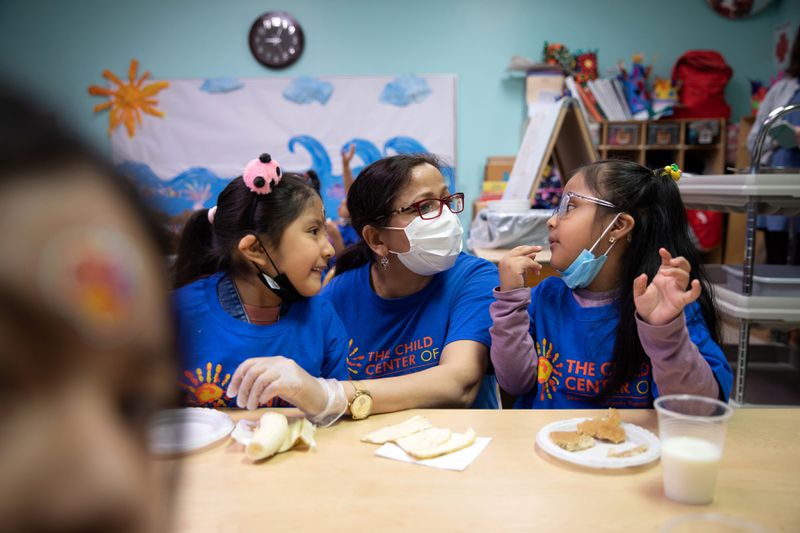
Even now, a day at Corona Head Start isn’t quite what it was before Covid hit. Parents drop their kids off at the front door instead of coming into the building. Teachers used to eat breakfast and lunch with the kids; now they serve up pancakes, bananas, and milk and keep their masks on while the students eat. When the kids lean in to gossip with each other over breakfast, a teacher has to remind them not to get too close without their masks on.
Fortunately for young children and their families, however, many of the losses of the pandemic can be repaired. For one thing, even though the effects of stress can begin in the womb, adaptation can start there too. Thomason points to the “Dutch Hunger Winter” of 1944-1945, during which pregnant women had to subsist on as little as 600 calories per day. Research later revealed that their babies were born metabolically prepared for a low-calorie diet.
“Our biology is so attuned to the situation,” Thomason said. A pandemic is different from a famine, but the past suggests that children will adjust to this experience, too. “Even though we think about early development as a time of heightened, let’s say, vulnerability,” she said, “it’s also a time when the brain is very plastic and well prepared to adapt.”
Indeed, the youngest children have sometimes adjusted better to the realities of the pandemic than their elders, who remember and miss the way things used to be. Bella’s older sister True, now 7, was upset and stressed during lockdown, sad to be missing in-person school, Vasquez said. For Bella, “it really didn’t affect her too much” emotionally. “She was a happy-go-lucky young lady.”
Some research even suggests positive effects, not necessarily of the pandemic itself, but of increased time spent with family. According to an analysis by Thomason, in households where parents experienced more added responsibilities as a result of the pandemic — for example, because they were working from home and taking care of children at the same time — children actually had better outcomes than in homes where parents’ responsibilities were less.
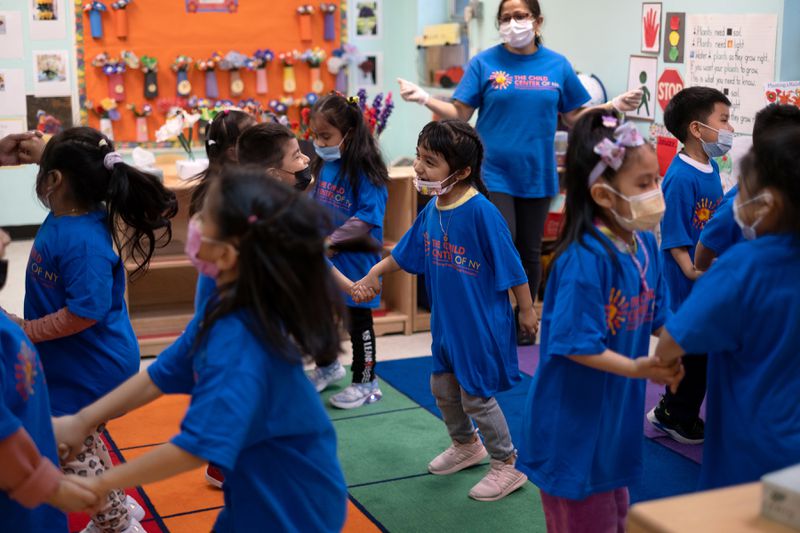
Trying to work while caring for kids during a deadly pandemic was deeply stressful for many parents, and millions of essential workers never had the choice to stay home at all. For parents who could, however, those burnout-inducing months (or years) may have had a silver lining for kids’ development. “Maybe what we were seeing was families that were more impacted in terms of parenting roles during the pandemic actually were spending more time with their children, and their children were actually experiencing the benefits,” Thomason said.
Young children may also have spent more time with older siblings, which research shows is beneficial for cognitive and language development, Thomason said. As difficult as the pandemic has been, she believes it’s important not to assume the last two years have been wholly negative for children.
“My strategy as a scientist, researcher, and mother has been to allow discussion of positives to come into the conversation,” Thomason explained. “There’s a degree to which, as a society, we are responsible for writing self-fulfilling prophecies in terms of what we take away from our experiences.”
Where research does point to problems as a result of the pandemic, there’s no reason to assume they will be lifelong. Shuffrey, the Columbia researcher, pointed out that her research was conducted on very young babies, and the differences her team found were small. “It’s not as though a screening tool at six months is predictive of one’s future,” she said. “Kids are so resilient that I have no doubt that these kids are going to be okay. But it’s still important to continue to monitor and provide support, if and when needed.”
It’s a message sent by educators and researchers alike: Now is not the time for defeatism over what young kids have lost in the pandemic, but for action. At Corona Head Start, what’s most needed is more staff to help kids who need speech therapy, early intervention, and other services, said Lillian Rodriguez-Magliaro, senior program director at the facility. Because of a statewide shortage of educators, some students at the school were identified as needing additional services in the fall and still haven’t received them. “What’s going to happen to the children that don’t get served?” Rodriguez-Magliaro said. “Our kids are moving into kindergarten.”

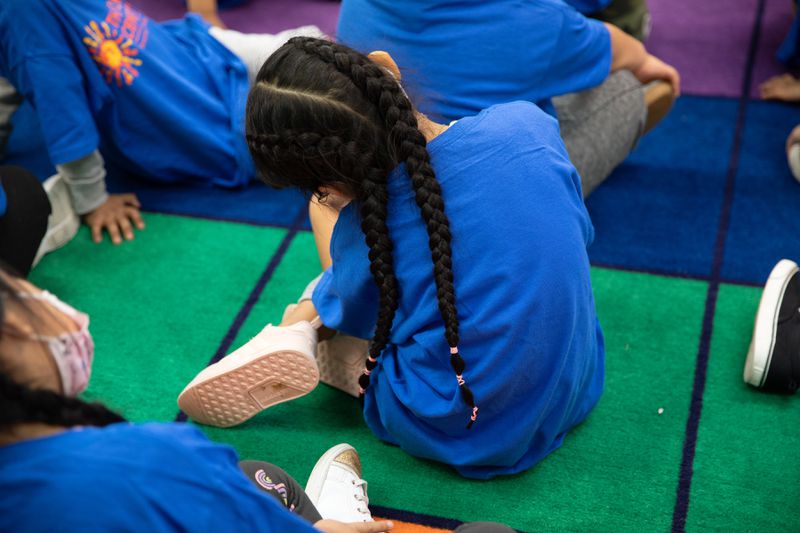
It’s an especially urgent concern for low-income families like those the Corona program serves, who can’t afford to pay for private therapies or other services outside of school. These families have already shouldered a disproportionate share of the pandemic’s trauma — indeed, Corona, one of the first Covid epicenters in the country, has lost hundreds of residents to the virus. Many parents, like Hernandez, who works as a housecleaner, were unemployed during lockdown in 2020, and many in the area still struggle to find jobs. Others worked outside the home as essential workers.
Their kids often did not experience an increase in family bonding time the way children of remote-working parents did. Thomason believes the benefits of increased parental interaction during the pandemic are probably concentrated among middle- and upper-middle-class kids, whose parents were able to be home with them in relative safety and financial security. The economic disparity in the pandemic’s impact “is probably the most significant thing we should all be talking about,” she said.
Remedying that disparity will mean closing the gap in access to services — which costs money. One big reason for the shortage of educators and other in-school service providers is low pay brought on by years of budget cuts, Rodriguez-Magliaro said.
“Teachers need to be paid more,” O’Rourke, of University Settlement, said. That’s especially the case for early childhood educators, who make less than elementary and high school teachers even though they work longer days and school years.
Families, too, need support to help them care for kids during an ongoing pandemic, experts say. That includes paid leave to be with children who are sick with Covid or quarantined after an exposure, Shuffrey said — something that remains a common occurrence, especially at daycares and preschools where kids are too young to be vaccinated. It also includes help with child care access. “Child care costs have gone up so significantly in the US in the past two years,” Shuffrey said. “Being able to provide families with child care that they can afford, so they can do things like work or take care of another family member, could be really, really supportive on a more structural level.”
The children born into the pandemic also need a culture that values them as people, rather than dismissing them as some kind of lost generation. “Stop labeling them ‘pandemic children,’” Rodriguez-Magliaro said. “It’s easy to label so that you don’t have to reflect on the need.”
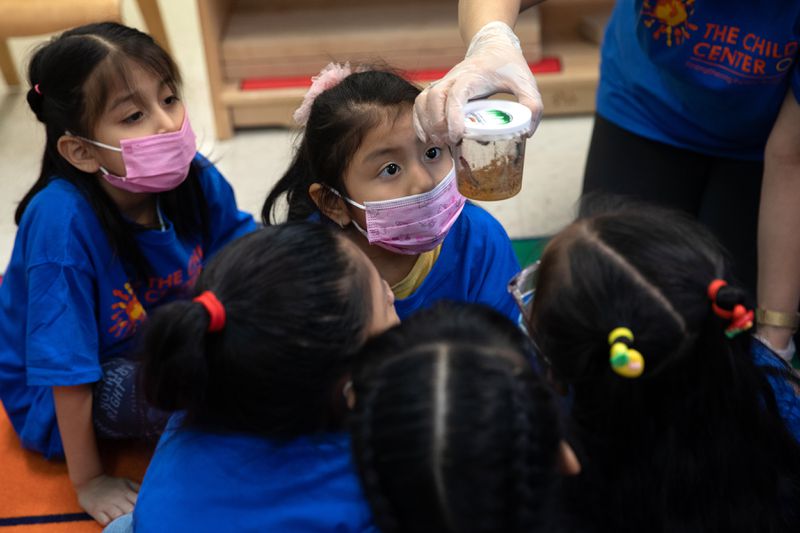
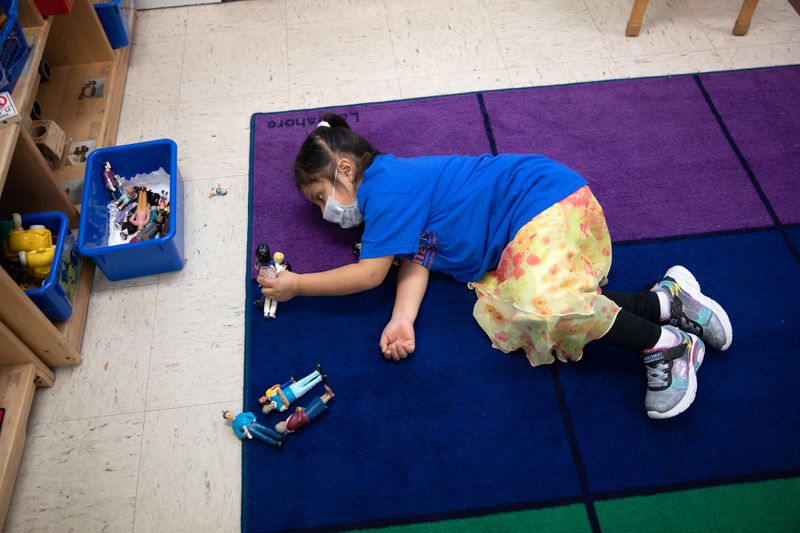
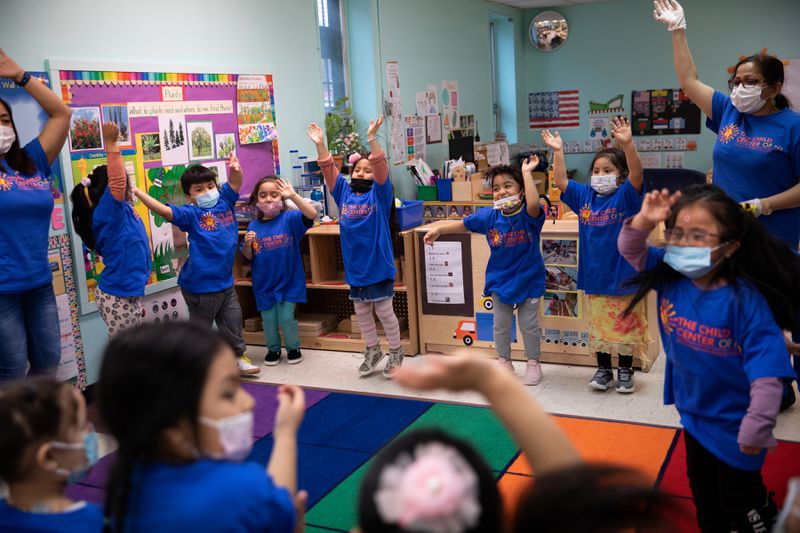
Despite the challenges, she and others at the Child Center are surrounded by examples that kids can thrive with the right support, even in times that remain difficult. When Rene was able to go back to school in September 2020 and began receiving his speech therapy services in person again, his communication skills quickly improved, Hernandez said. “You can tell that there’s been a change.”
Today, he’s an energetic 5-year-old who hams it up while dancing to “I’m a Gummy Bear” and crowds to the front of the room with his friends when it’s time to look at the class caterpillar, who’s almost ready to form a cocoon. When he starts playing at the classroom’s sand table, his classmate Ruby clamors to join him.
Despite their time in isolation, the kids in Classroom 9 share a palpable affection for each other now. They hold hands during dance time, build pretend houses for each other, squabble over plastic butterflies and then make the butterflies hug. A school day for them involves “a lot of complaining, a lot of giggling, a lot of running, a lot of correcting,” Khanam said, “And at the same time, a lot of love.”
“When they grow up, I want to see them successful,” she says of the 18 preschoolers she teaches every day. And for policymakers and people in power, she has a simple ask: “Treat them as human beings.”
----------------------------------------
By: Anna North
Title: The kids who have never known life without Covid-19
Sourced From: www.vox.com/the-goods/23148897/covid-pandemic-kids-toddlers-babies-preschool-school
Published Date: Tue, 07 Jun 2022 12:00:00 +0000






